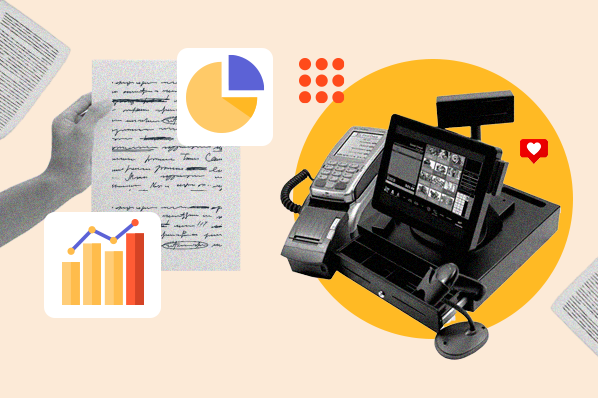POS reporting gives you the tools to analyze sales data and understand what is working or not working in terms of employee/store sales, gross profit margin, etc.
Utilizing POS reports can also help businesses identify new avenues of sales and growth. By reviewing the data, you can identify peak shopping times and create marketing strategies to increase revenue.
Profit margins
POS systems collect valuable data every time employees ring up sales. They collect sales data, inventory information, customer feedback and employee performance assessments that allow you to evaluate employee performance against key business factors and make strategic decisions based on these important indicators. In addition, these systems automatically track shifts for employees as well as aiding in HR KPI management.
No matter the industry you operate in, POS reports are essential for understanding and increasing profit margins. They can provide key metrics and analytics that allow you to identify popular products as well as those which yield minimal return and how much customers are willing to pay for them.
POS sales reports come in various forms and can give an overall overview of operations or provide more in-depth views into specific aspects of your business. For instance, discovering top-performing products and their prices allows you to develop strategies to lower costs for unpopular items while raising prices of profitable ones.
POS reports enable you to monitor trends in your inventory and prevent stock shortages by alerting you when quantities of certain items drop below certain threshold levels, helping maintain an adequate inventory supply. In addition, threshold levels allow you to set an automated reorder notification message should the quantity fall below this limit – helping ensure an adequate supply.
Inventory management
POS reporting offers retail business decision-makers many valuable insights into staff, inventory and overall sales strategy. Managers at all levels can use POS reports to make decisions regarding stores, employees and customers; it helps retailers identify problems while strengthening successful operations; for instance comparing actual till takings against system totals ensure there are no discrepancies when collecting cash at the end of each sales day; it can also track payments methods and manage invoices.
As well as improving inventory management, RFID tags can also help optimize inventory control by identifying top and worst-selling products, enabling you to avoid stockpiling slow-selling ones while overstocking popular ones. You can even monitor merchandise movement between warehouses and storefronts so as to control stock and ensure enough of your most popular items remain available during busy days.
POS reports can also help you assess your best-selling employees and gain insight into how they’re increasing sales. With this data at hand, it becomes much simpler to hire the ideal people for your business and motivate them to reach peak performance – such as offering bonuses for upselling products! You can also use this information to determine who are repeat buyers versus newcomers so you can create targeted marketing campaigns that effectively market to those customers who purchase regularly from your store.
Customer service
Your POS system is more than a payment tool; it holds invaluable business insights that can enhance KPIs and drive retail business to success. Point of sale reporting offers insight into a wide variety of activities including customer behavior/satisfaction/product sales/employee performance/inventory control/marketing engagement etc.
The ideal POS systems are created to serve as a powerful, central data hub that consolidates all your customer, inventory and sales information into one convenient place. Automating reports is key for unlocking their value; doing so saves both time and increases accuracy.
POS reports offer businesses a window into sales data, including items sold, payment types (cash and card), orders by date, payment breakdowns and refunds – essential data that allows for accurate future demand estimation and profit projection.
Restaurants can use point of sale sales data to keep labor costs under control and inform staffing decisions, identify refund patterns from customer refunds, identify what products are selling well and which aren’t selling so that strategic changes can be implemented within their business, and find patterns in customer refund reasons to identify potential root causes of issues and prevent recurrences. POS sales information also gives restauranteurs insight into which ones are making sales – offering valuable opportunities for cost reduction and strategic decision-making in terms of business expansion plans.
Marketing
POS systems offer a wealth of customer, sales and inventory data that can help marketers improve their marketing efforts by understanding customer trends and buying habits to create more targeted campaigns that drive revenue growth. Furthermore, reports generated from POS systems provide vital tax data.
No matter whether your business is a restaurant, hair salon, or retail store – using point of sale reports to identify sales trends can help your staff make informed decisions regarding products, staffing levels and other aspects of running it more efficiently and improving bottom lines while simultaneously increasing customer loyalty.
A POS system can also assist in real time stock monitoring and identification of slow-selling items, as well as identify sales peaks during certain weeks, months or years allowing you to restock popular products at peak times and promote them during these peak periods to boost sales.
Some POS systems can even sort customer data according to product preference or purchasing activity, enabling marketers to customize marketing offers that attract specific customer types – for instance a freebie for loyal customers or discounts on new items. Furthermore, these systems track purchase history so as to understand loyalty and churn trends which can then help create more efficient customer service strategies.

